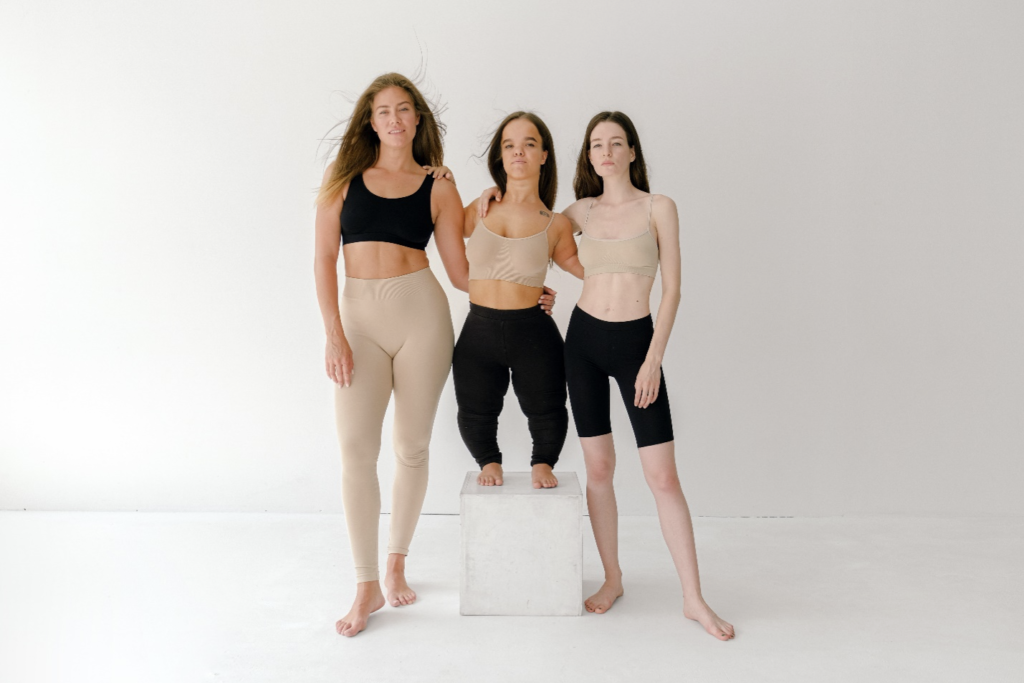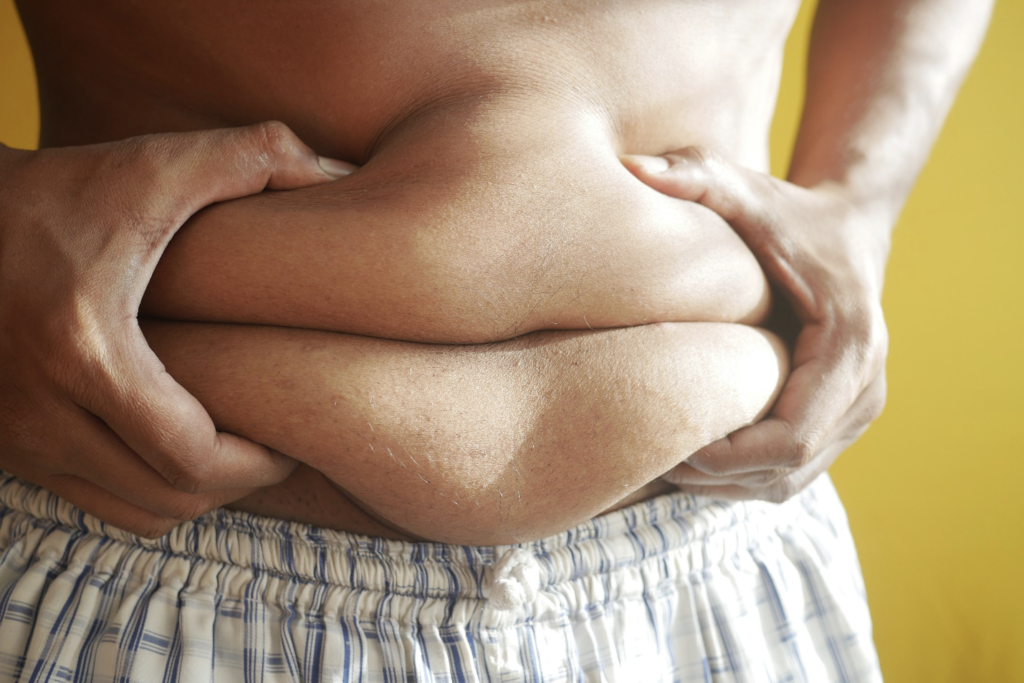The body positivity movement has gained major support in recent years, pushing the idea that all bodies, regardless of their forms, sizes, or appearances, are deserving of love, respect, and acceptance. It aims to oppose society’s restricted definitions of beauty, which have fostered idealised aspirations and fostered pervasive dissatisfaction with one’s own body.
A certain body type is frequently emphasised in society’s exaggerated beauty standards, which are frequently reflected in media, clothing, and advertising. These standards cause people who don’t fit these constricting ideals to internalise social norms, which damages their self-esteem and fosters feelings of inadequacy. The body positivity movement tries to disrupt these standards by pushing for a more inclusive and tolerant attitude towards all bodies.

The celebration of different body shapes, sizes, and appearances is one of the fundamental tenets of the body positivity movement. It acknowledges that every person is different and that there is no one widely accepted definition of beauty. Through its embrace of diversity, the movement aims to encourage people to value their own bodies as well as to see the beauty in others, regardless of what society may think of them.
Self-acceptance is encouraged by body positivity, which places emphasis on the belief that genuine beauty originates within. It promotes a positive self-image and enhances mental wellness by urging people to love and accept themselves as they are. People can escape the restrictions of cultural expectations by learning to accept themselves, which boosts one’s sense of self-worth, self-assurance, and general well-being.
The body positivity movement vehemently rejects stigmatising and body shaming. It aims to combat negative attitudes and conducts that uphold prejudice against people based on their size, shape, or appearance. A more compassionate and inclusive society that respects and values all bodies is what the movement seeks to achieve by bringing attention to the negative effects of body shaming.
Social pressures and unrealistic beauty standards may be harmful to one’s mental health. A few effects of having a poor body image include disordered eating habits, low self-esteem, and body dissatisfaction. By encouraging people to have a good relationship with their bodies, increasing self-compassion, and lessening the effects of societal pressure, the body positivity movement plays a significant role in supporting mental health.

The media and fashion industry have a significant influence on shaping societal beauty standards. The body positivity movement seeks to challenge these industries to be more inclusive and representative of diverse bodies. It advocates for greater diversity in advertising campaigns, fashion runways, and media representations, aiming to provide positive role models for individuals of all body types and to promote inclusivity rather than exclusivity.
The body positivity movement recognises the importance of intersectionality and strives to be inclusive of all individuals. It acknowledges that body image issues are not limited to one gender, race, or ethnicity but affect people from various backgrounds. By considering the unique experiences of marginalised communities, the movement seeks to create a more inclusive space that addresses the intersectional nature of body acceptance.
Criticisms and Inaccuracies
Like any movement for social change, body positivity has faced criticisms and misinterpretations. Some contend that it encourages an unhealthy lifestyle or deters people from working toward their fitness goals. However, the movement aims to promote self-acceptance and wellbeing at any size or shape rather than encouraging or promoting unhealthy behaviours. It emphasises the value of adopting healthy habits rather than aiming for a particular appearance while acknowledging that healthy bodies can take on various forms.

It is critical to understand that body positivity does not advocate promoting laziness or neglecting health problems. Instead, it encourages people to prioritise self-care, mental health, and body acceptance while living a balanced and healthy lifestyle. The movement highlights the importance of shifting the emphasis from external validation to internal well-being, advocating self-acceptance and love as the cornerstone for overall health and pleasure.
Furthermore, certain critics claim that the body positivity movement caters solely to particular body types, excluding individuals who are naturally skinny or meet social beauty standards. However, the movement’s purpose is not to humiliate or exclude any body type, but rather to fight arbitrary norms that undermine individuals’ self-esteem and promote body variety. It is critical to recognise that body positivity does not intend to downplay or discredit anyone’s experiences, but rather to foster an inclusive community in which all bodies are celebrated.
The Way Forward

To advance the body positivity movement, it is critical to keep challenging cultural standards, advocating for diverse representation, and fostering inclusivity. Education is critical in raising awareness about the negative consequences of body shaming and the value of self-acceptance. Through instructional initiatives, workshops, and dialogues, schools, media outlets, and community organisations may all play an important part in promoting body positivity.
The fashion and beauty sectors have a duty to advance inclusivity and diversity of body types. Advertising campaigns and fashion shows can help to reshape cultural beauty standards and promote a healthier view of one’s body for people by using models of different sizes, shapes, and appearances.
Individuals can actively participate in the body positivity movement by addressing their own internalised biases and supporting others in their journey towards self-acceptance. Positivity about one’s body can also be developed by engaging in self-care activities, learning self-compassion, and surrounding oneself with encouraging people.
In this regard, the movement for body positivity is a liberating force that encourages self-acceptance and supports a variety of body types. The movement aims to create a society in which everyone can accept and love themselves just as they are by questioning social beauty standards, combating body shaming, and supporting inclusivity. It promotes a transition from seeking approval from others to focusing on one’s own wellbeing, stressing that everyone is worthy of love, respect, and acceptance. We can keep advancing body positivity and fostering a more open and compassionate society by educating people about it, showing it in media, and making personal efforts.
Sources
- https://en.m.wikipedia.org/wiki/Body_positivity#:~:text=Body%20positivity%20is%2C%20%22the%20mindset,development%20of%20Anxiety%20and%20depression.
- https://www.medicalnewstoday.com/articles/body-positivity
- https://theconversation.com/amp/why-the-body-positivity-movement-risks-turning-toxic-189913
- https://www.psychologytoday.com/us/blog/fit-femininity/202211/exploring-the-body-positivity-movement?amp
- https://www.forbes.com/sites/jenniferpalumbo/2022/05/12/how-the-body-positive-movement-doesnt-encourage-obesity-but-inclusion/?sh=3d3f0e431737
- https://psyche.co/ideas/body-positivity-is-fixated-on-beauty-heres-how-to-fix-that




